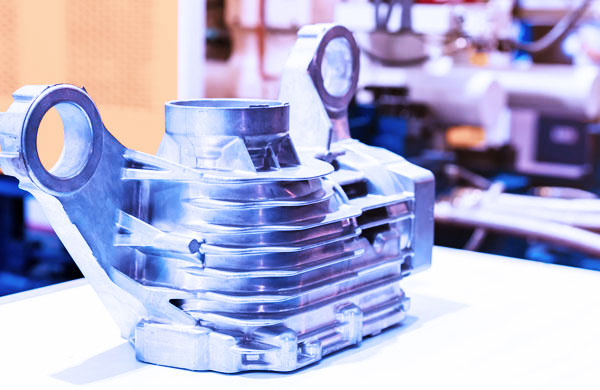Things about Stahl Specialty Company
Table of ContentsAbout Stahl Specialty CompanyThe 10-Second Trick For Stahl Specialty CompanyThe Stahl Specialty Company DiariesStahl Specialty Company Fundamentals ExplainedThe Main Principles Of Stahl Specialty Company Some Ideas on Stahl Specialty Company You Need To Know

If you're making a metal product, you have actually likely thought about using light weight aluminum as the base material. It has a high strength-to-weight proportion, good deterioration resistance, great formability, and visual charm. These factors have actually caused its increased appeal in recent times. Pure light weight aluminum has limited applications, so it is often incorporated with other aspects, such as silicon, magnesium, and manganese to form alloys.
Different elements and quantities produce a wide range of preferable physical and chemical residential or commercial properties. And the Light weight aluminum Organization (AA), based in North America, has actually developed specifications that control light weight aluminum alloys' make-up, residential properties, and language. There are two kinds of light weight aluminum alloys functioned and cast. Shop workers form these alloy types in various means, which significantly affects their attributes.
Our Stahl Specialty Company Diaries
Cast light weight aluminum alloys are made by melting pure light weight aluminum and combining it with various other steels while in liquid form. The mix is poured into a sand, pass away, or investment mold. After solidification, the steel is eliminated from its mold. At this stage, it is in either its final kind or as a billet or ingot for more processing.

The fourth number, which comes after the decimal factor, specifies if the alloy is a casting (xxx. Wrought aluminum alloys additionally start by combining molten light weight aluminum with other metals. In contrast to cast alloys, nevertheless, they are created right into their final form via procedures such as extrusion, rolling, and bending after the metal has actually strengthened into billets or ingots.
There are many small distinctions between functioned and cast aluminum alloys, such as that actors alloys can have extra considerable quantities of other metals than functioned alloys. But the most significant difference between these alloys is the fabrication process where they will certainly go to supply the final item. Other than some surface treatments, cast alloys will leave their mold and mildew in almost the specific strong type preferred, whereas wrought alloys will certainly undertake numerous modifications while in their solid state.
If you believe that a wrought alloy might be the most effective for your job, take a look at several of our write-ups that describe even more concerning certain functioned alloys, such as Alloy 6061 and Alloy 6063. On the other hand, if you think a cast alloy would be much better for you, you can find out more regarding some actors alloys in our Alloy 380 and Alloy 383 write-ups (coming quickly).
Stahl Specialty Company Fundamentals Explained
When selecting an aluminum shop for your manufacturing requirements, it's crucial to study several aspects. One of the most important elements to consider is the experience and competence of the foundry. Foundries in Missouri. Choosing a factory who has the appropriate knowledge of the aluminum casting procedure, and the profile to show for it, helps to have an effective outcome for your job
Having the experience and sector knowledge to engineer your spreadings for optimal manufacturing and top quality end results will certainly simplify the job. Making light weight aluminum castings calls for a complex set of processes to attain the appropriate outcomes. When selecting a new aluminum foundry to partner with, ensure they have comprehensive market experience and are experienced regarding all elements of the light weight aluminum spreading process: style, production, material analysis, and product screening.
The shop needs to additionally have a tried and tested performance history of supplying remarkable products that meet or surpass consumer assumptions. Quality assurance should also be at the top of your listing when choosing a light weight aluminum foundry. By functioning with a qualified factory who follows the standards for quality assurance, you can protect the integrity of your product and ensure it meets your requirements.
By selecting a firm who supplies solutions that meet or exceed your product needs, you can be sure that your task will be finished with the utmost precision and performance. Different components require various production methods to cast aluminum, such as sand casting or pass away casting.
Stahl Specialty Company Fundamentals Explained
Die casting is the name offered to the procedure of creating complicated steel components via usage of molds of the component, also referred to as passes away. The procedure makes use of non-ferrous steels which do not contain iron, such as aluminum, zinc and magnesium, because of the desirable residential or commercial properties of the steels such as reduced weight, greater conductivity, non-magnetic conductivity and resistance to deterioration.
Pass away spreading manufacturing is quickly, making high manufacturing degrees of parts easy. It produces more components than any other process, with a high degree of precision and repeatability. To find out more about die spreading and die casting materials used at the same time, continued reading. There are three sub-processes that fall under the classification of die spreading: gravity die casting (or irreversible mold and mildew spreading), low-pressure die casting and high-pressure die casting.
No matter the sub-process, the die spreading process can be broken down right into six steps. After the pureness of the alloy is examined, dies are created. To prepare the passes away for casting, it is vital that the dies are clean, to make sure that no deposit from previous productions continue to be. After cleansing, the ejection lubrication is applied to the die to make sure a smooth release.
Rumored Buzz on Stahl Specialty Company
The pure metal, additionally known as ingot, is included in the furnace and kept at the molten temperature level my explanation of the steel, which is then moved to the shot chamber and injected into the die. The stress is after that kept as the metal solidifies. When the metal solidifies, the cooling procedure starts.
(https://leetcode.com/u/stahlspecialc/)
The thicker the wall of the part, the longer the cooling time because of the quantity of interior steel that additionally requires to cool down. After the component is totally cooled, the die cuts in half open and an ejection system presses the part out. Complying with the ejection, the die is closed for the following shot cycle.
The flash is the additional material that is cast throughout the process. This have to be cut off using a trim device to leave simply the main component. Deburring removes the smaller items, called burrs, after the cutting process. Ultimately, the element is polished, or burnished, to offer it a smooth surface.
Stahl Specialty Company for Dummies

Zinc is just one of one of the most previously owned alloys for die spreading because of its lower cost of resources. It's additionally one of the stronger and secure steels. Plus, it has outstanding electrical and thermal conductivity. Its deterioration resistance likewise allows the components to be durable, and it is one of the more castable alloys as a result of its lower melting point - Casting Foundry.
As mentioned, this alloy is just one of the most commonly utilized, yet manufactures will, sometimes, select light weight aluminum over zinc because of aluminum's production benefits. Aluminum is very cost-effective and one of the much more versatile alloys. Light weight aluminum is used for a variety of various items and industries anything from home window frames to aerospace materials.